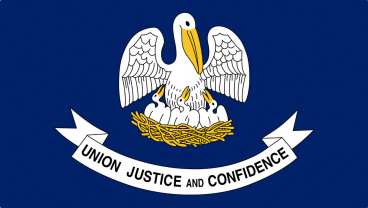Asbestos in Louisiana
Louisiana is home to one of the largest, most productive seaports on the Gulf of Mexico: New Orleans. New Orleans is also the centerpiece of a state grappling with asbestos issues. Louisiana shipyards and oil refineries struggled with asbestos exposure.

Written by Michelle Whitmer • Edited By Walter Pacheco • Scientifically Reviewed By Arti Shukla, Ph.D.
Asbestos.com is the nation’s most trusted mesothelioma resource
The Mesothelioma Center at Asbestos.com has provided patients and their loved ones the most updated and reliable information on mesothelioma and asbestos exposure since 2006.
Our team of Patient Advocates includes a medical doctor, a registered nurse, health services administrators, veterans, VA-accredited Claims Agents, an oncology patient navigator and hospice care expert. Their combined expertise means we help any mesothelioma patient or loved one through every step of their cancer journey.
More than 30 contributors, including mesothelioma doctors, survivors, health care professionals and other experts, have peer-reviewed our website and written unique research-driven articles to ensure you get the highest-quality medical and health information.
About The Mesothelioma Center at Asbestos.com
- Assisting mesothelioma patients and their loved ones since 2006.
- Helps more than 50% of mesothelioma patients diagnosed annually in the U.S.
- A+ rating from the Better Business Bureau.
- 5-star reviewed mesothelioma and support organization.
Testimonials
My family has only the highest compliment for the assistance and support that we received from The Mesothelioma Center. This is a staff of compassionate and knowledgeable individuals who respect what your family is experiencing and who go the extra mile to make an unfortunate diagnosis less stressful. Information and assistance were provided by The Mesothelioma Center at no cost to our family.LashawnMesothelioma patient’s daughter
How to Cite Asbestos.com’s Article
APA
Whitmer, M. (2023, December 11). Asbestos in Louisiana. Asbestos.com. Retrieved April 19, 2024, from https://www.asbestos.com/states/louisiana/
MLA
Whitmer, Michelle. "Asbestos in Louisiana." Asbestos.com, 11 Dec 2023, https://www.asbestos.com/states/louisiana/.
Chicago
Whitmer, Michelle. "Asbestos in Louisiana." Asbestos.com. Last modified December 11, 2023. https://www.asbestos.com/states/louisiana/.
About Louisiana
Louisiana residents face exposure risks in certain occupational settings known for asbestos use. Examples in Louisiana include power plants, oil refineries, shipyards and industrial plants.
The state has no natural asbestos deposits. Some companies dumped asbestos waste throughout Louisiana that contaminated the soil and groundwater.
Hurricane Katrina caused devastation to the point that some areas are still recovering. Hurricane floods damaged many older homes containing legacy asbestos.
Exposure to asbestos may cause mesothelioma, lung cancer or asbestosis.
Mesothelioma lawsuits in Louisiana have resulted in multimillion-dollar verdicts for some asbestos plaintiffs. For example, in June 2021, a Louisiana jury awarded $8.2 million to Steven Aaron Sr. He claimed he developed mesothelioma from exposure to asbestos working as an auto mechanic. Aaron worked on asbestos brakes and clutches found on vehicles manufactured by Ford Motor Company.
Louisiana’s Occupations and Areas at Risk
Because of the amount of oil pulled from the Gulf of Mexico, Louisiana is home to many oil refinery laborers. Exposure to asbestos on the job put them at risk for developing mesothelioma. Asbestos was used to insulate tanks, vats and pipelines.
Miners in Louisiana didn’t mine asbestos itself, but they used it in processing and to prevent fires. Salt mines, like Cargill’s giant operation in Breaux Bridge, used asbestos in the salt purification process.
An occupation often forgotten to be at risk of asbestos exposure is first responders. Police, firefighters and volunteers got exposed responding to Hurricane Katrina. Exposure also happened cleaning up New Orleans and parishes around southern Louisiana.
Job Sites with Known Asbestos Exposure:
- Calumet Refineries in Princeton and Shreveport
- Marathon Refinery in Garyville
- Placid Refining Refinery in Port Allen
- W.R. Grace Exfoliation Facility in New Orleans
- Higgins Shipyard New Orleans
- Louisiana Superdome in New Orleans
- Motiva Norco Refinery in New Orleans
- Bollinger Shipyards in Lockport
- Conrad Industries in Morgan City
- Avondale Industries in Bridge City
- Dow Chemical in Plaquemine
- Johns Manville plant in New Orleans
- Calcasieu, Conoco, Citgo and Valero Refineries in Lake Charles
Oil Refineries
Asbestos was the material used to insulate pipelines in oil refineries in Shreveport, Princeton and Lake Charles. Asbestos provided heat resistance. Oil is flammable, and the refining process requires high temperature and pressure. Asbestos was also used to insulate tanks, reactors, pumps and furnaces.
Port of Baton Rouge
Port workers often encountered asbestos on ships and at the docks. For example, heart surgeon Mike Hackler got exposed during his summers as a college student. Hackler worked at the Port of Baton Rouge unloading asbestos. Every 100 bags, he opened a bag and sort through it for any contraband. Several decades later, Hackler and some of his friends who also worked at the port, developed mesothelioma.
Schools
Schools across the country used asbestos-containing construction materials. Both old and new schools used these materials. Schools close for asbestos removal projects as needed.
In 2018, public schools in New Orleans closed three times for asbestos projects. One of the schools, Rosenwald Middle School, closed over asbestos in floor tiles and construction glue.

W.R. Grace in New Orleans
Shipyards and oil refineries were not the only sources of asbestos exposure for New Orleans residents. From 1965 to 1985, W.R. Grace operated an exfoliation facility in New Orleans.
It received approximately 148,000 tons of asbestos-containing vermiculite from Libby, Montana. Exfoliation of vermiculite involves heating the mineral in a furnace to expand or pop it into smaller pieces. This process releases more asbestos than other processing methods.
Thousands of community members living and working around the facility got exposed to asbestos. Jefferson Parish, where the facility is located, ranked 19th among all U.S. counties for mesothelioma deaths. Testing in November 2008 confirmed the presence of asbestos inside the facility and in soil samples around the building.
Louisiana residents who get sick from Grace’s vermiculite may apply for compensation through WRG Asbestos PI Trust. The trust fund opened after Grace’s bankruptcy proceedings concluded. Proof of exposure is necessary for someone to receive compensation. Most claimants hire an experienced asbestos lawyer to handle the claim.
Hurricane Katrina, Flooding and Asbestos in Louisiana
The city of New Orleans was forever changed when Hurricane Katrina hit on Aug. 29, 2005. The resulting flood waters destroyed buildings, residential homes and forestry in the Gulf Coast area.
The U.S. Environmental Protection Agency warned more than 100 pollutants may have been present in flood waters, drinking water and the air. The agency announced the risk of exposure to asbestos and a host of other hazards.
Asbestos posed a unique issue for those assisting in the cleanup.
Asbestos is present in many older homes, especially in structures built before the 1970s.
Until Aug. 29, 2008, the EPA allowed debris that could have contained asbestos to enter landfills not approved for such waste. This action helped to clean up debris in a timelier manner, but may have exposed people to asbestos in the process.
The state issued seven air quality violations by the end of 2008 relating to the handling of asbestos materials in landfills. Failing to wet asbestos materials, which prevents the spread of asbestos fibers, was among the violations.








